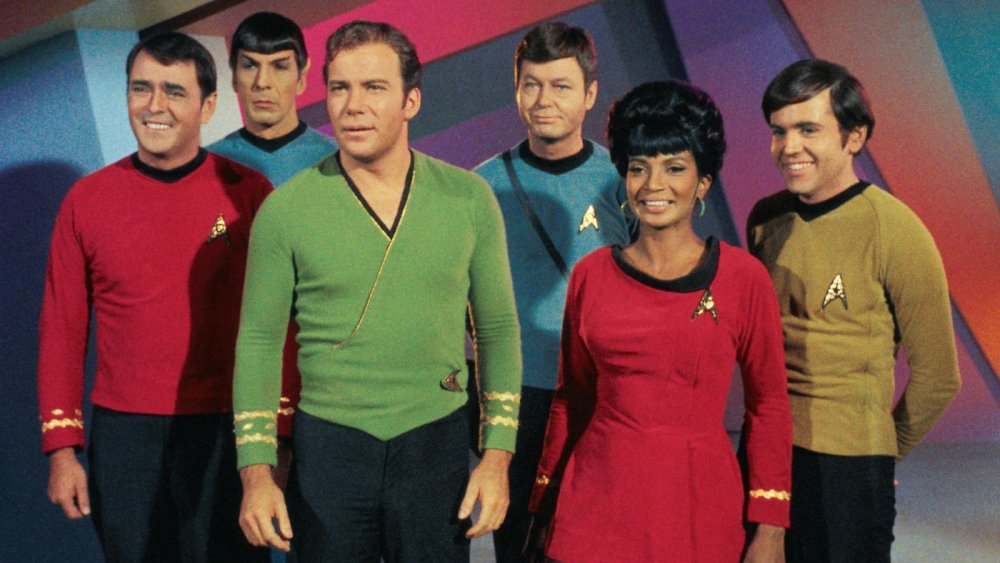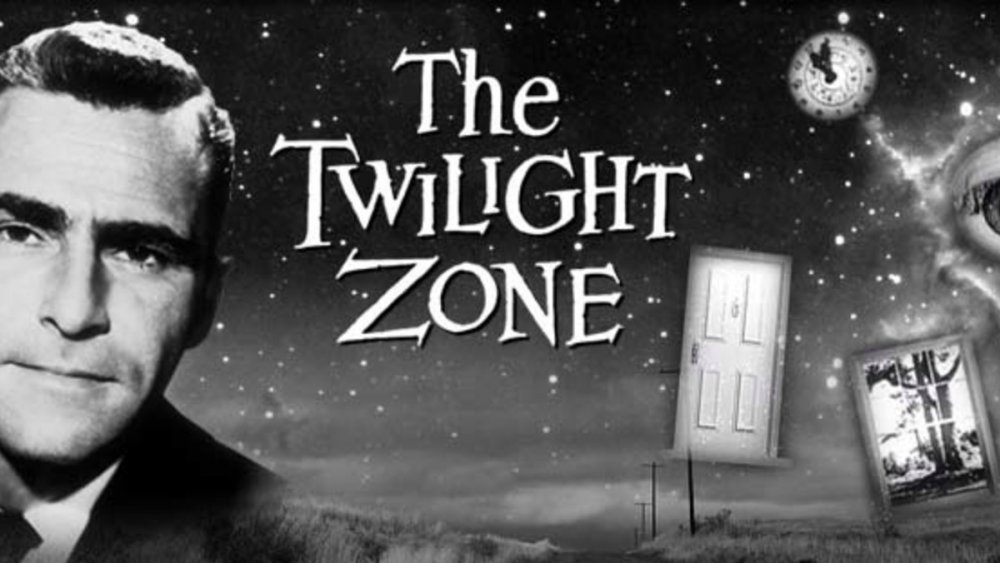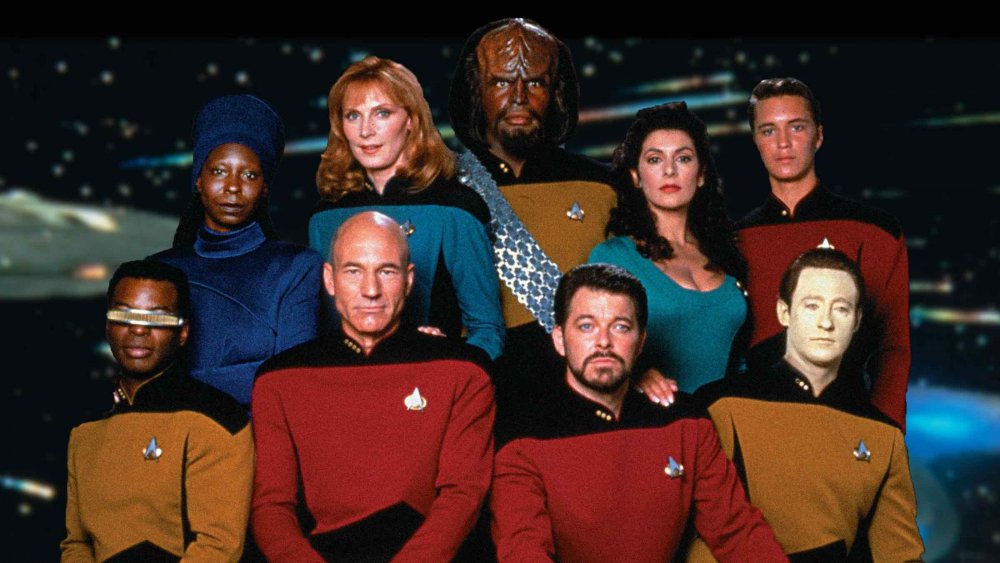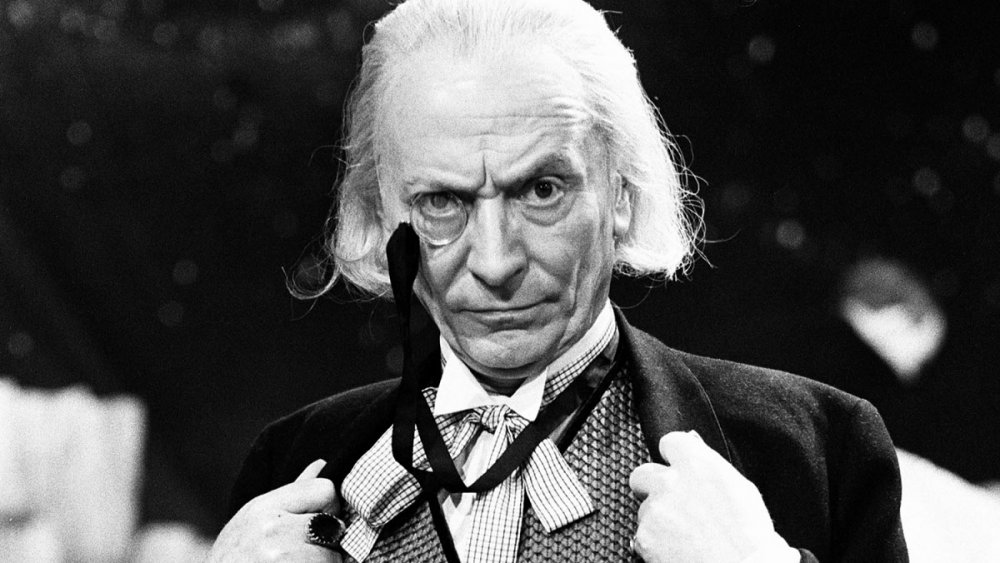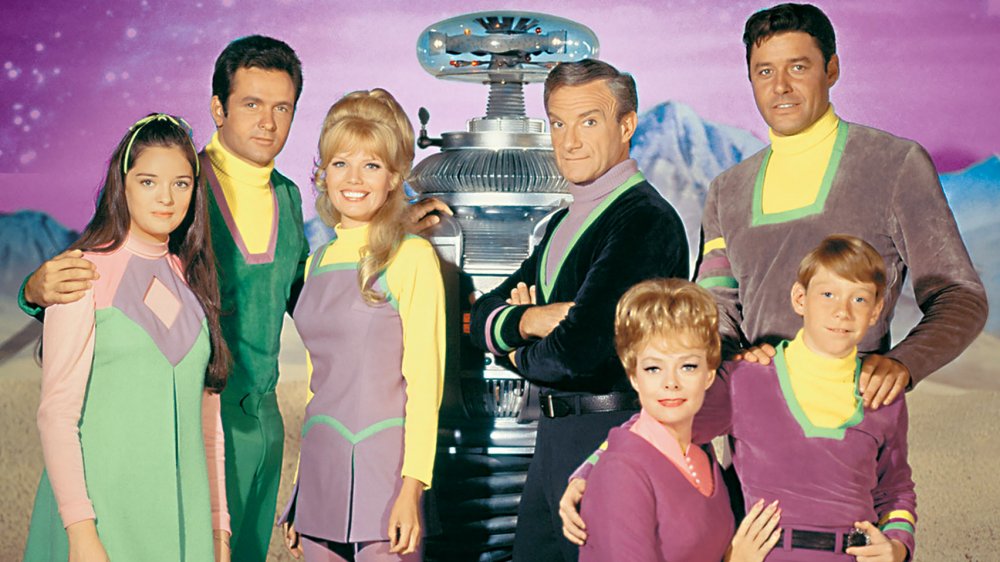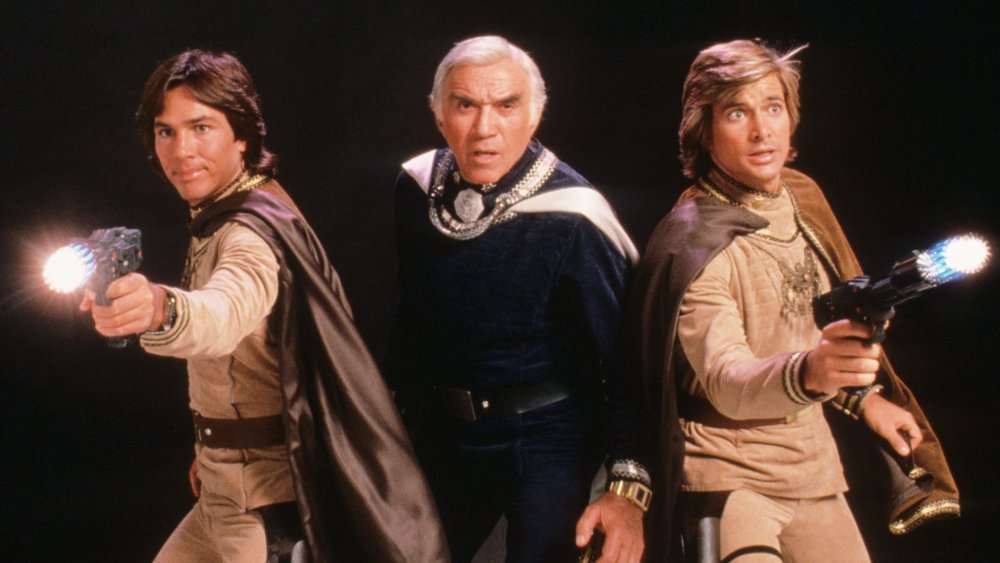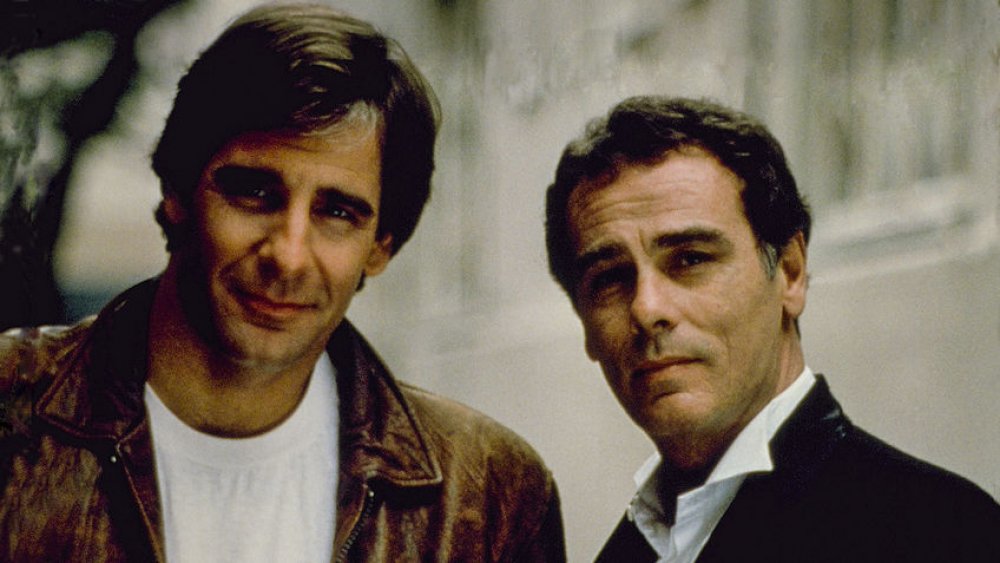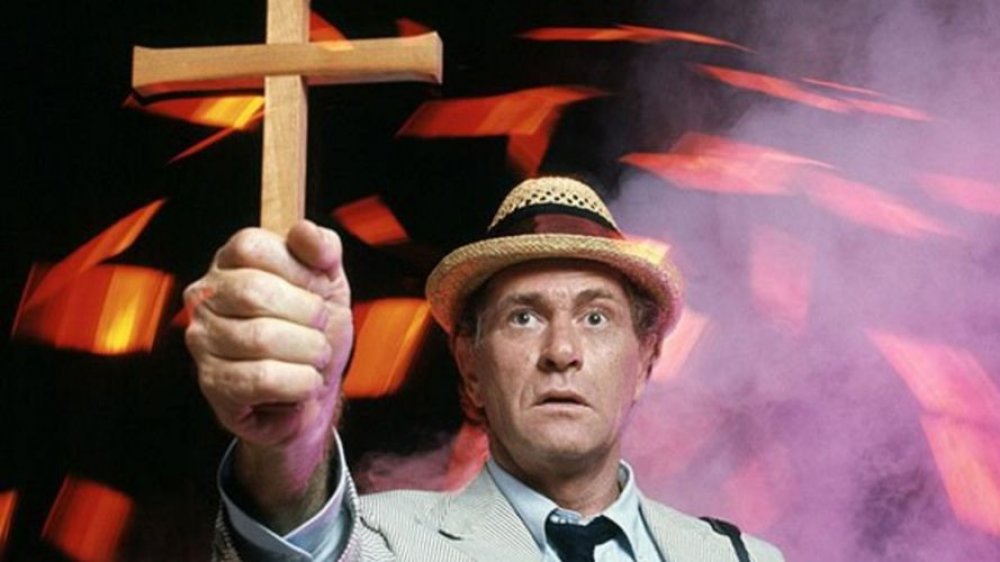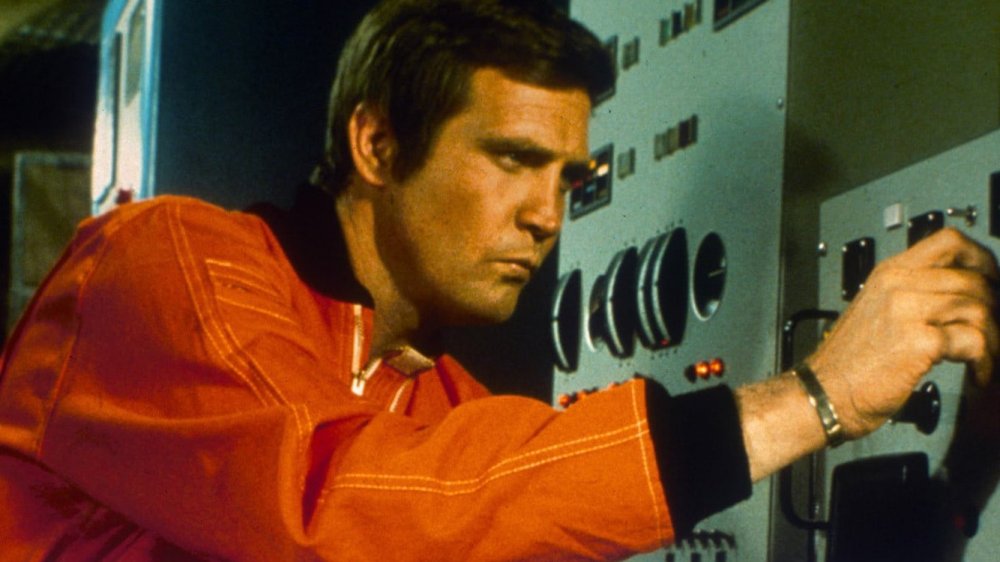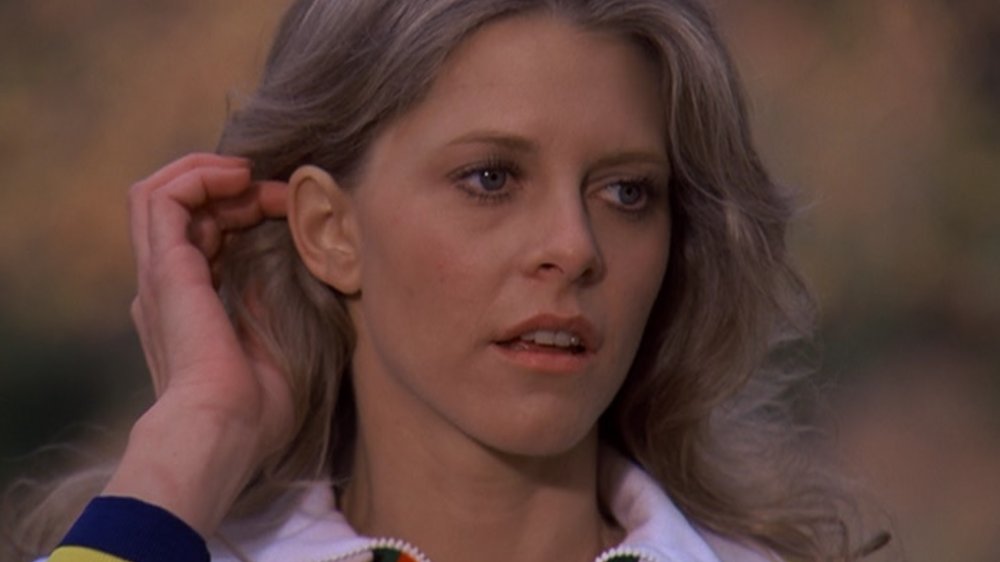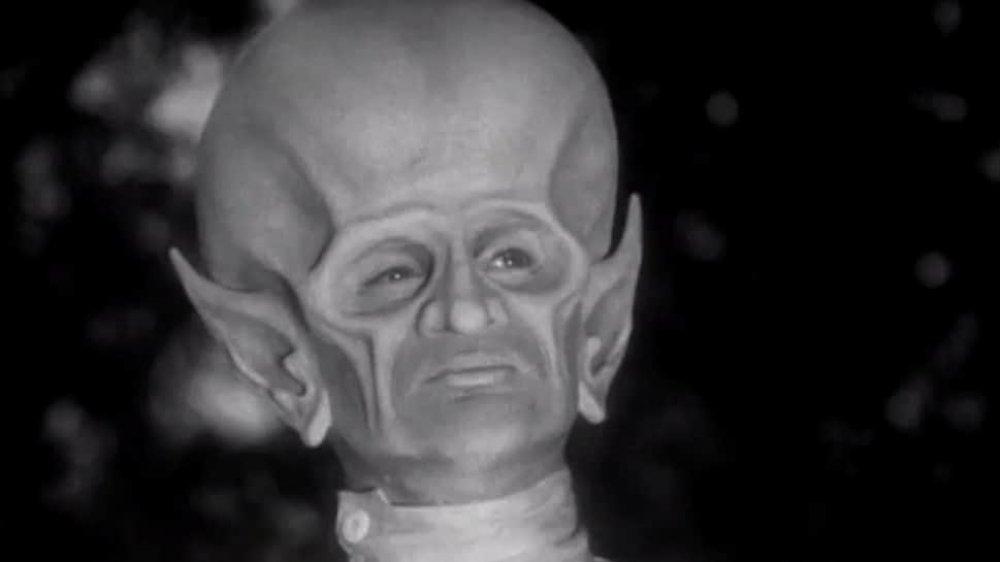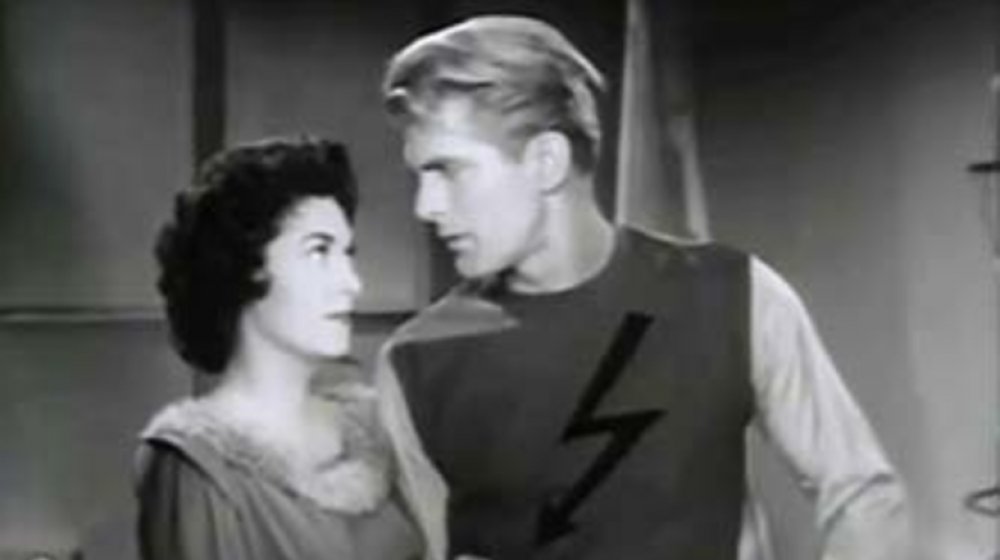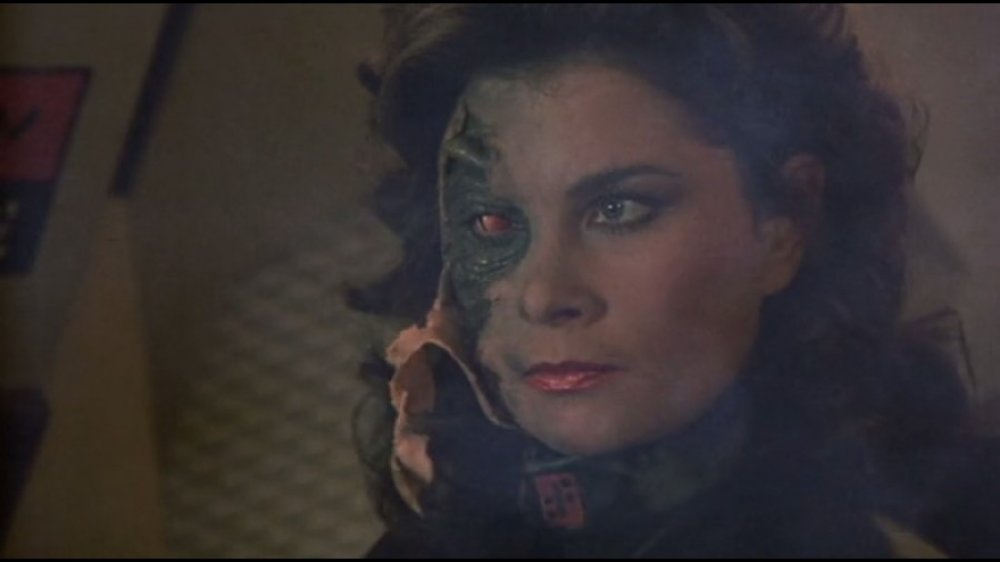Old School Sci-Fi TV Shows That Should Be Required Viewing
Science fiction TV has a history as old as TV itself. Some of the best sci-fi shows on right now have direct roots back to some of the oldest and most innovative sci-fi series from television's first few decades. Whether your sci-fi show of choice is The Expanse or The 100, Westworld or Watchmen, practically all science fiction series on right now can thank those on this list for some bit of influence.
But there are certainly sci-fi fans out there who may not know the history behind some of their favorite shows or realize that something like Black Mirror has direct ties to the original The Twilight Zone. If that's the case, we're here to help. This list mines the best science fiction shows from the 1950s through the 1980s that are required viewing for any fan of sci-fi TV. Sometimes they're cheesy, sometimes they're serious, but they're all great science fiction fun.
The Twilight Zone
Even if you've never seen a single episode of The Twilight Zone, you've probably heard its legendary theme music. The Twilight Zone might be the definitive science fiction TV series. The anthology show, created by Rod Serling, ran on CBS from 1959 through 1964 and incorporated stories that leaned into a number of sci-fi subgenres, including fantasy, horror, paranormal, and psychological thrillers.
If you enjoy a sci-fi, fantasy, or horror anthology series today, chances are it was influenced in some way by The Twilight Zone. Shows like Netflix's Black Mirror and FX's American Horror Story draw from the format and structure set up by The Twilight Zone. And anthology series like The Outer Limits and Night Gallery were even more directly inspired by The Twilight Zone.
Fan-favorite episodes of The Twilight Zone include "Long Distance Call," about a boy who communicates with his dead grandmother on the phone; "Time Enough At Last," starring a guy who just wants to be left alone and read his books; "To Serve Man," which is a neat little title for a cookbook; and "Eye of the Beholder," which features the pig-nosed medical team many will probably recognize. These episodes, which are ingrained in many of our memories, whether we saw them air originally or in reruns when we were kids, are a great place to start.
Star Trek: TOS, TAS, TNG
The Star Trek universe includes eight series and 13 films, with more on the way. Star Trek: The Original Series started it all. Created by Gene Roddenberry, TOS revolves around the 23rd-century adventures of the crew of the starship Enterprise. The original crew includes William Shatner as Captain James Kirk, Leonard Nimoy as the Vulcan Spock, DeForest Kelley as ship's doctor Leonard McCoy, James Doohan as engineer Scotty, Nichelle Nichols as communications expert Uhura, George Takei as helmsman Sulu, and Walter Koenig as security officer Pavel Chekov.
TOS ran for three seasons from 1966 to 1969. In the 1970s, its popularity in syndication led to the creation of Star Trek: The Animated Series. This cartoon spin-off of the original was geared more toward children, though adults enjoyed it, too. Most of the original cast voiced their own characters, except Chekov, who was replaced with new characters: an alien with three arms and legs named Lt. Arex and M'Ress, a catlike alien.
In 1989, Star Trek returned again, this time titled The Next Generation and starring British Shakespearean actor Patrick Stewart as Captain Jean-Luc Picard, a heady, intellectual counter to Kirk's impulsive action captain. Taking place about a century after TOS, TNG brought a whole new, well, generation to Star Trek and introduced numerous new alien species and intergalactic conflicts. The latest series, Star Trek: Picard, incorporates many of TNG's beloved characters and important storylines. TOS, TAS, and TNG make up essential Star Trek of the era.
Doctor Who
If you're a Doctor Who fan who has only ever seen the rebooted series that began in 2005, it's time to jump in the TARDIS and head a bit farther back. The original Doctor Who premiered on the BBC in 1963 and ran through 1989. The series, which follows the adventures of a Time Lord from the planet Gallifrey, originally starred William Hartnell until 1966. At that point, the show introduced the concept of the Time Lords being able to regenerate themselves when near death. As a result, the first incarnation of the series saw eight actors (William Hartnell, Patrick Troughton, Jon Pertwee, Tom Baker, Peter Davison, Colin Baker, Sylvester McCoy, and Paul McGann) play eight Doctors until the series finally went on a long hiatus after 1989, save for a 1996 TV movie. When the series was rebooted in 2005, Christopher Eccleston took over as the Doctor, who has since been played by David Tennant, Matt Smith, Peter Capaldi, and most recently Jodie Whittaker taking on the role as the first female Doctor.
Like a lot of science fiction television from the 1960s, Doctor Who certainly has its moments of cheesiness. The production can often be clunky, and the tone is a lot more playful than the dark turns the rebooted series has taken. There are even a number of episodes missing from the classic era because the BBC deleted them to make room in its archive. Still, the classic episodes are definitely worth revisiting.
Lost in Space
If you're a fan of the Netflix remake of Lost in Space, it's definitely a good idea to take a peek at the original series. Inspired by Johann David Weiss 1812 novel Swiss Family Robinson, the show was essentially a space version of the novel, with the Robinson family lost on another planet rather than a remote island. Created and produced by "Master of Disaster" Irwin Allen, the series ran for three seasons between 1965 and 1968. The first season was in black and white, and the second and third were in color.
The original Lost in Space is one of those fun shows set in the future that, for today's viewer, is actually the past. The Jupiter 2 takes off from an overpopulated Earth in 1997, headed for a new world near Alpha Centauri carrying Professor John Robinson (Guy Williams), his wife Maureen (June Lockhart), and their kids Judy (Marta Kristen), Penny (Angela Cartwright), and Will (Billy Mumy). They're accompanied by US Space Corps Major Donald West (Mark Goddard) and another passenger, the saboteur Dr. Smith (Jonathan Harris), whose work on behalf of an unnamed nation was to cause the life support systems to malfunction eight hours after launch. Smith is trapped inside the ship, however, and his extra weight causes the ship to veer off course and crash on an unknown planet.
In addition to the aforementioned Netflix series, the original show also inspired a 1998 movie starring William Hurt, Matt LeBlanc, and Gary Oldman.
Battlestar Galactica
With a new Battlestar Galactica series headed for NBC's streaming service Peacock at some point in the future, it's a great time to explore the original. Premiering in 1978, BSG, as it's known by fans, revolves around the 12 Colonies of Mankind as they battle a war against the Cylons, robotic beings who have destroyed their home planets, forcing them to survive on multiple starships in space. The battlestar Galactica is the last surviving warship, which leads the fleet of the last humans. The original starred Lorne Greene as Commander Adama, John Colicos as Count Baltar, Lloyd Bridges as Commander Cain, Richard Hatch as Captain Apollo, and Dirk Benedict as Lieutenant Starbuck.
The original series, like many of these old TV shows, is severely lacking in the diversity for which the 2004 reboot has been praised. But it's a fun show and sets up the world for a deeper dive into the reboot, should one desire to learn all they can about the world. 2004's reboot also undid some of the plot points and history that the original set up, specifically that the Cylons were created by a long-dead reptile alien species and that the series took place at the same time that Earth's first Moon landing did. Sadly, the original BSG ran for only one season but did inspire a spinoff called Galactica 1980, which ran for ten episodes.
Quantum Leap
Like Star Trek: The Next Generation, Quantum Leap premiered in the 1980s and lasted into the 1990s, so it might be a stretch to include it on a list with shows 30 years older, but Quantum Leap was so hugely influential in the world of sci-fi TV that it simply must be included.
The series stars Scott Bakula as Dr. Sam Beckett, a physicist who invents a way to travel through time. He uses himself as a guinea pig to test out the method, but instead of traveling back in time as himself, he is thrown into another person's body. He continually "leaps" through time and in and out of bodies to try and get home, his only companion being a hologram of his colleague and best friend, Admiral Al Calavicci, played by Dean Stockwell. Al informs Sam that, before he's allowed to leap back to his own life, he has to correct things that went wrong in the past. Sam jumps into every kind of person: men, women, black, white, heroes, villains, and even at one point into the body of Lee Harvey Oswald.
The series ran on NBC from 1989 to 1993 and, because of its premise, essentially became a kind of procedural show — a clean slate wiped after every roll of the credits, making it more connected to anthology series than at first it seems.
Kolchak: The Night Stalker
If you're a fan of The X-Files, you're going to want to check out Kolchak: The Night Stalker, which X-Files creator Chris Carter has said directly influenced the creation and style of his show. Kolchak: The Night Stalker started out as not one but two television movies before becoming a series. The first, The Night Stalker, aired on ABC in 1972, and the second, The Night Strangler, hit in 1973. In 1974, Kolchak: The Night Stalker premiered on ABC, and though it only ran for one season, it solidified itself into cult status.
The premise revolves around Carl Kolchak (Darren McGavin) an investigative reporter with a particular interest in strange, supernatural cases. Throughout his investigations, Kolchak encounters vampires, werewolves, zombies, witches, mummies, and the big man himself: Satan. The series hovers mostly in the realm of horror, though it does delve into science fiction, with Kolchak dealing with cases involving aliens and killer robots.
It's pretty clear that The X-Files, and more specifically the character of Fox Mulder, were directly influenced by Kolchak: The Night Stalker. Indeed, as Entertainment Weekly writes, "Series creator Chris Carter says his goal was to make a show as scary as Kolchak: The Night Stalker." He surely succeeded. Carter even asked McGavin if he would appear on The X-Files as Kolchak. McGavin turned him down but did appear as another character: FBI Agent Arthur Dales, "the father of the X-files."
The Six Million Dollar Man
"We can rebuild him. We have the technology. We can make him better than he was. Better ... stronger ... faster." The Six Million Dollar Man follows the story of a former astronaut, USAF Colonel Steve Austin, played by Lee Majors, who is severely injured while piloting an experimental aircraft. In order to save his life, OSI, the secret government society for which he works, "rebuilds" his body, giving him advanced bionic implants and super abilities. His bionic implants and super abilities include a bionic left eye, helping him to see better than any other human, bionic legs, and a bionic right arm, giving him super strength.
The series ran from 1973 to 1978 and was based on Martin Caidin's 1972 novel Cyborg. It's yet another 1970s series that was first introduced as a TV movie and then expanded into a full series. The Six Million Dollar Man's influence on later sci-fi television is evident in shows like Star Trek: Voyager, Alias, and even in the cinematic portrayal of Marvel's Iron Man. But The Six Million Dollar Man also directly influenced another show...
The Bionic Woman
The Bionic Woman is a direct spin-off of The Six Million Dollar Man. The lead character Jaime Sommers, played by Lindsay Wagner, first appears in a 1975 two-part episode of The Six Million Dollar Man titled "The Bionic Woman." As Steve Austin's high school sweetheart, Jaime is introduced as a love interest. In the two-parter, however, Jaime and Steve go on a skydiving date, and Jaime's parachute malfunctions, causing her to seemingly plummet to her death. Yikes! Steve begs OSI to save her in the same way that they saved him, and the secret organization agrees, as long as Jaime will join their cause. The two-part episode ends, however, with Jaime's body rejecting the bionic implants, leading to her death. However, the character was so popular that the spin-off was created, with Jaime's survival kept a secret from Steve.
The Bionic Woman ran from 1976 to 1978 and featured a number of crossover episodes with The Six Million Dollar Man before they were both abruptly canceled in 1978. The two characters wrapped up their stories in three different television movies: 1987's The Return of the Six Million Dollar Man and the Bionic Woman, 1989's Bionic Showdown: The Six Million Dollar Man and the Bionic Woman (with an early-career Sandra Bullock!) and 1994's Bionic Ever After? where Jaime and Steve finally get married.
As a feminist take on The Six Million Dollar Man, The Bionic Woman definitely inspired shows like Dark Angel, Buffy the Vampire Slayer, and Dollhouse.
The Outer Limits
"There is nothing wrong with your television set." So begins the cold open of 1963's The Outer Limits. "Do not attempt to adjust the picture. We are controlling transmission. If we wish to make it louder, we will bring up the volume. If we wish to make it softer, we will tune it to a whisper. We will control the horizontal. We will control the vertical. We can roll the image, make it flutter. We can change the focus to a soft blur, or sharpen it to crystal clarity. For the next hour, sit quietly and we will control all that you see and hear. We repeat: There is nothing wrong with your television set. You are about to participate in a great adventure. You are about to experience the awe and mystery which reaches from the inner mind to ... The Outer Limits."
Much like The Twilight Zone, The Outer Limits, which ran from 1963 to 1965, was an anthology series that told a different story every episode. But where The Twilight Zone often used dark fantasy and told an allegorical story with some kind of societal message, The Outer Limits was just straight sci-fi action, often dealing with aliens. The series was revived in 1995 and ran for another five seasons. With the new millennium approaching, the reboot was able to tackle more
Flash Gordon
To have a greater appreciation for and a better understanding of today's domination of film and television by comic book properties, look no further than Flash Gordon. The original film serials ran in the 1930s, but once every home had a TV, the character was given his own show. The series, which was one of many incarnations based on the Flash Gordon comic book character, ran for only one season in 1954. It starred Steve Holland as Flash Gordon, Irene Champlin as Dale Arden, and Joseph Nash as Hans Zarkov. In the original comics, the three friends started out as humans trapped on the planet Mongo, but the 1954 series shot them to the year 3203 as agents of the Galactic Bureau of Investigation who go on intergalactic missions.
The series was a combination production between the US, West Germany, and France. The first 26 episodes were filmed in West Germany less than ten years after the end of World War II, and as a result, some of the destruction of the city of Berlin is visible in the series. The latter third of the series was filmed in France.
For even further Flash Gordon fun, check out the exceedingly hokey but vibrant 1980 film as we await a new animated series from Thor: Ragnarok director Taika Waititi.
V
You might recall a 2009 series called V in which lizard-like aliens disguised as humans land on Earth under a flag of peace, only to begin taking over the planet. Well, my friends, that series is actually a reboot of a 1983 miniseries and 1984 series of the same name. The series was inspired by Sinclair Lewis' 1935 anti-fascist novel It Can't Happen Here, but instead of turning Americans into fascists, the series created a species of reptilian aliens who have infiltrated the planet in secret to begin taking over the world. By transforming scientists into enemies and discrediting all who question their intentions, the "Visitors" essentially have the humans take over the Earth for them. The V are analogous to Nazis, with their youth-led "Friends of Visitors" movement, stiff uniforms, and strict rules.
The two-part miniseries was such a hit that it spawned another TV movie called V: The Final Battle, followed by V: The Series, which ran for one season from 1984 to 1985. The 2009 reboot wasn't as popular, however, perhaps because the allegorical comparisons to Nazism were replaced with references to the presidency of Barack Obama. It puttered out after two seasons and only 22 episodes — all the more reason to check out the original.
